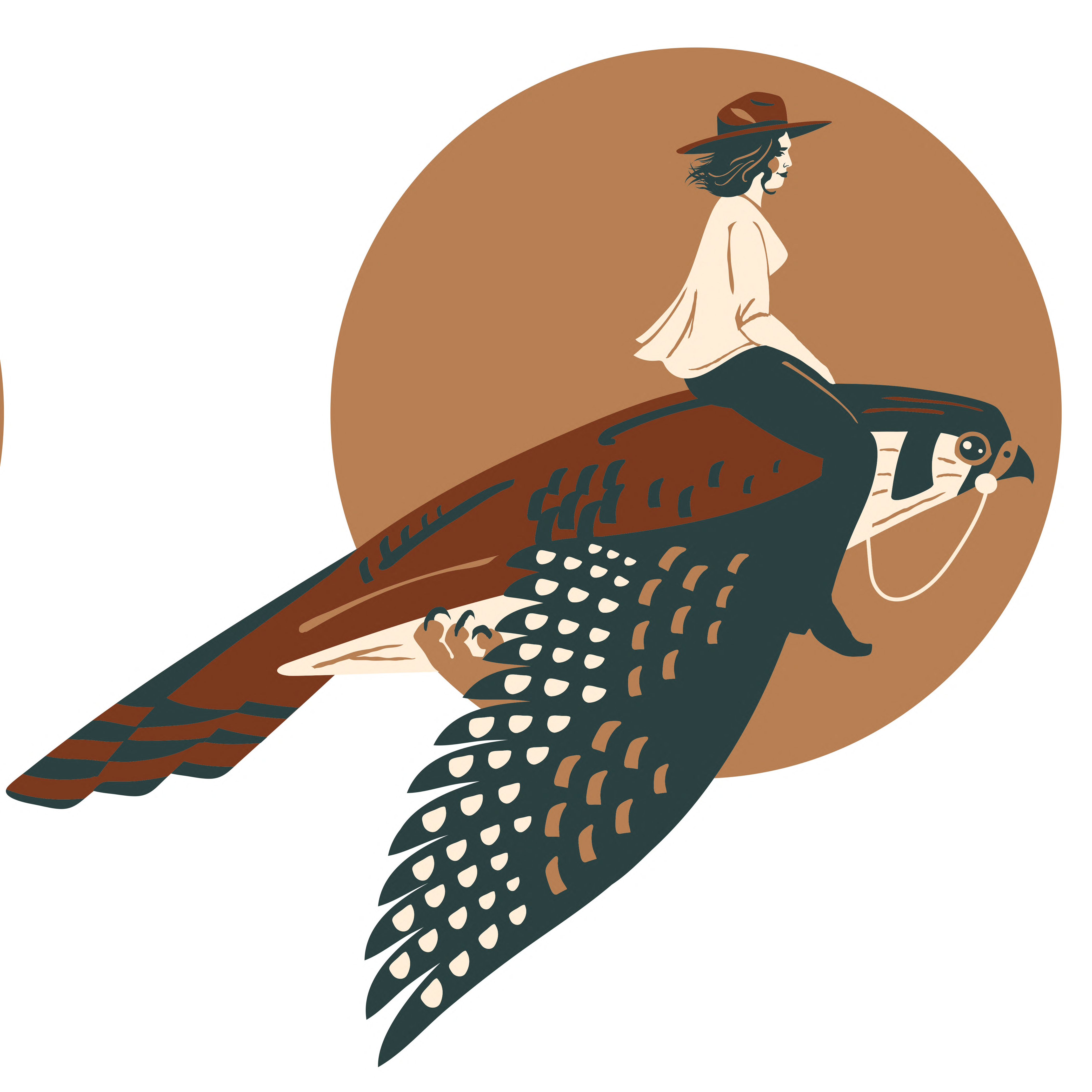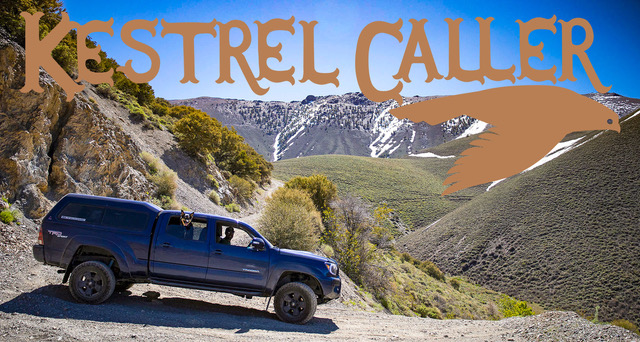Prefer to Hear this story Instead? Listen Here.
True mystery and real isolation. They’re some of Nevada’s best features, especially with pronghorn antelope, insanely dark skies, flowing hot creeks, and massive black fire opals as your compass.
Together with radical self-reliance and the lure of gold and silver mineral paydays, these are the exact reasons an almost mythical frontierswoman Josie Pearl left some of the most sensational boomtowns in the West for Nevada’s upper lefthand corner. To say it’s easily one of Nevada’s most isolated landscapes in a modern world is an understatement, but back during Josie’s time? Well, to independently homestead here, she must’ve seen something most people don’t.
I first learned about Josie Pearl from my forever-hero, Nell Murbarger, when she wrote about continuing to hear of Josie and her elusive lifestyle as she documented Humboldt County for Desert Magazine in the 1950s. Nell and I share a lot in common with our interests and travel style, though one detail about her life I’ll never not be in complete awe and amazement of is how she traveled to Nevada’s most barren corners alone, but also in an old station wagon. As we, in our 2017 Tacoma built for roads like the ones she traveled down with even fewer people along the way, I always wonder how in the hell she did it.
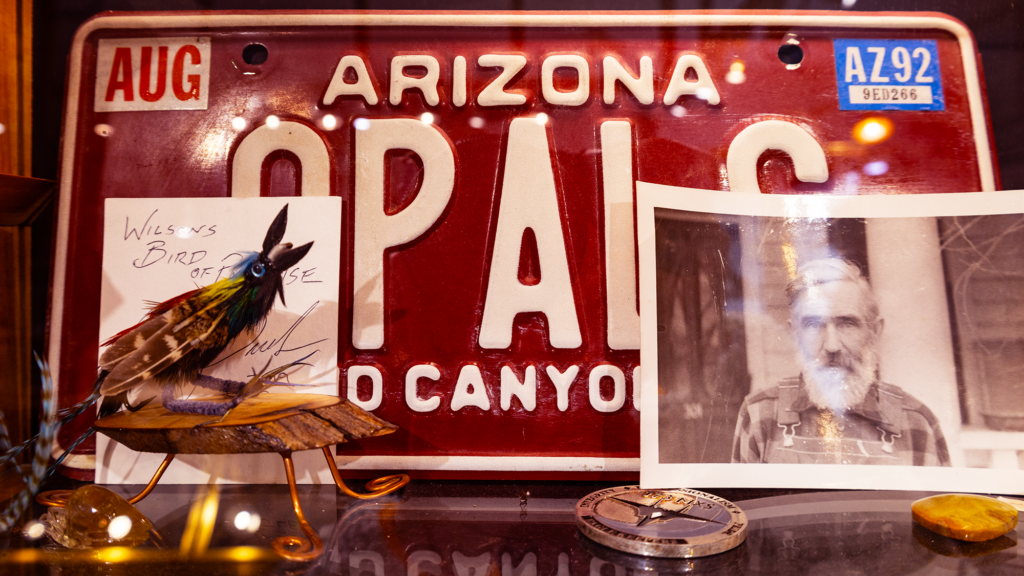

And from the Comstock Lode to the Greatest Gold Camp Ever Known, to people who staked out their place in a lonely corner of the Great Basin because they saw something in it, Nell’s mission was to interview people who were part of some of Nevada’s most prolific, history-making moments, often times still out there defending that exact piece of it. Nell’s solo travel was ballsy in and of itself during the time she was here, but the fact that she was fascinated by and set out on a quest to find Josie Pearl—someone living with even more extraordinary independence than herself—really caught my attention.
While the life and lore of Nell Murbarger and Josie Pearl, some the brightest stars on earth, a colossal swath of land that looks the exact same now as it did during the 1800s, flowing hot creeks, or where massive, forrest-surrounded lakes became the most famously rare opals around are each plenty fascinating enough to be their own individual Legend of Lost Nevada, it’s the intersection where their legacies meet that will always have my full attention. The 10,000 acres of Nevada highland desert that beholds some of the truest tangible magic I’ve ever experienced, and the story of Josie Pearl, the Roebling Opal, and the Last Free Antelope.
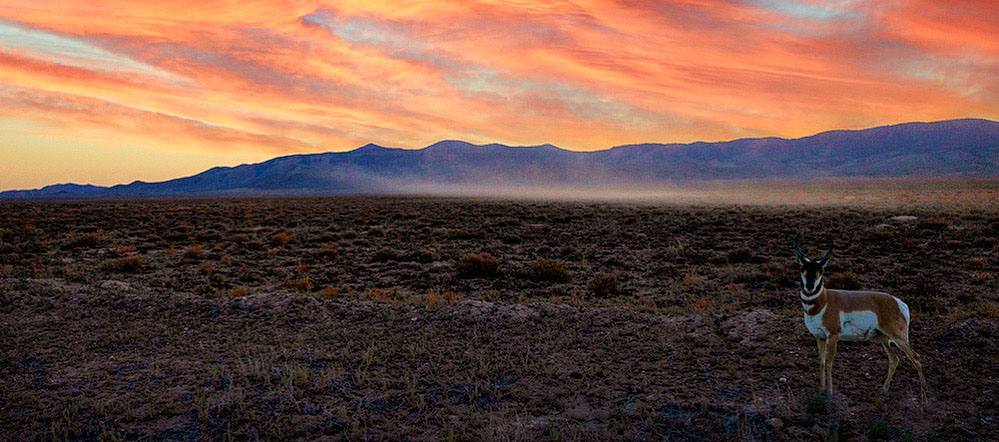
Josie Pearl: Queen of the Black Rock
There is the desert recluse and also the hermit. Josie wasn’t either.
She was a true frontier adventuress, who lived life simply but also very grand. And whether it was shattering societal gender and class norms, to an unfailing thirst of knowing all that actually awaits in those high desert hills then doing anything to follow it, Josie didn’t miss. I think I am personally so invigorated and invested whenever I come across a story like Josie’s or Nell’s because in my experience exploring, researching, and documenting the Sagebrush State, the majority of the stories you’ll hear of women are about them being tricked, or lured into coming West (to Nevada) with the promise of a big silver-funded mansion, or something else of the like. So, like Mrs. Hugh Brown of Lady in Boomtown and Josie Pearl, their stories not only radiate positivity, but are also full of authentic excitement, and that’s because they actually looked. They saw the possibility in the rise of the terrain around them.
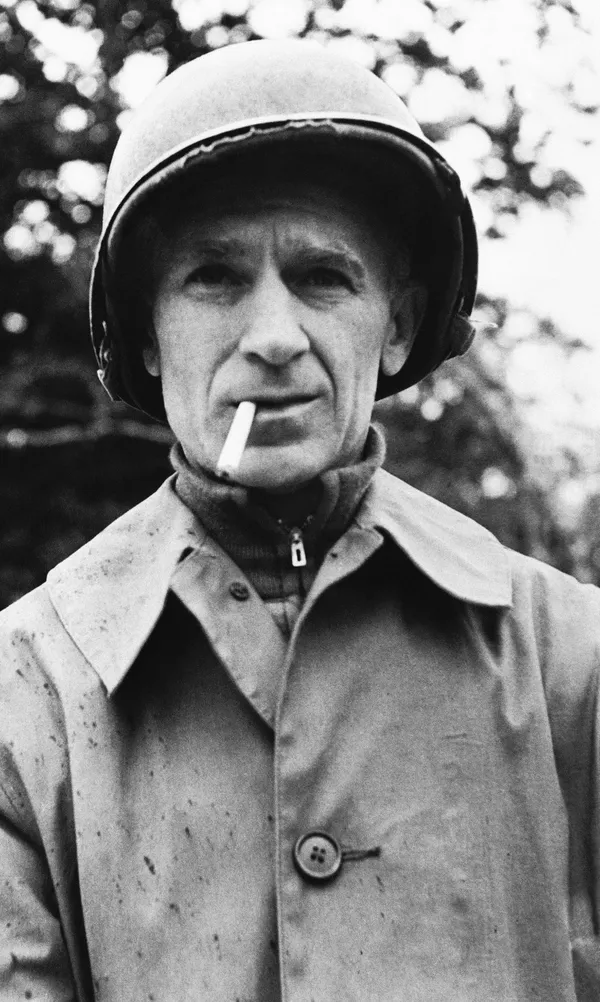
In 1954, Nell Murbarger tracked down, then wrote about Josie for Desert Magazine, but so did Ernie Pyle: an east coast Pulitzer Prize-winning American journalist and war correspondent, who documented his travel experiences in his book Home Country 20 years earlier. While Nell’s entire career was centered around the Great Basin, Ernie’s was not, though his brief chapter about Nevada included details of the Comstock Lode, and Josie Pearl.
“Josie Pearl was a woman of the West”, Pyle wrote, and Murbarger referenced ahead of her visit. He continues, “Her dress was calico with an apron over it. On her head was a farmer’s straw hat, on her feet a pair of mismatched men’s shoes, and on her left hand and wrist six thousand dollars worth of diamonds.” They both went on to describe how Josie was a woman of contradiction—living with nothing, at least in terms of social norms, but when it came down to it, she truly had everything.
As if she was a mirage rising from the north Black Rock Desert countryside she made her home, both Nell and Ernie heard about Josie as a “great personality, right out of the pages of the Old West” while on assignment in Winnemucca, then tracked her down after talking to a string of locals along the way. From “somewhere near the north end of the Black Rock” to “up top near Summit Lake”, to “over beyond Quinn River Country,” nobody really seemed to know where she lived or why on earth she was there, just that she was out there somewhere.
And by the time Nell did find Josie, she discovered she was nearly 100 years old, living in the ultra-rural, sparsely human populated northwestern Nevada landscape, where she continued living life the only way she knew how: “playing a man’s part in a man’s game.” One fiercely independent person to another, Josie and Nell’s connection seemed instantaneous, where Josie would invite Nell into a disheveled home and onto the seat of her best chair and, all while surrounded by ore assay receipts, disheveled pots and pans, and an expensive wardrobe trunk with a seven thousand dollar sealskin coat inside, where she would spell out the courageous past nine decades of her life in the American West. Turns out it was filled with just as much surprise as the items scattered around them in her tiny home north of the Black Rock.
Josie’s family was originally from the east, but relocated to Arizona once her Dad became interested in mining. At just 13 years old, Josie found her own mine and sold it for five thousand dollars, which funded her relocation to Creede, Colorado during its bonanza years. Here, she got a job as a waitress “slinging hash”, got married, and later independently operated a boarding house. The two of them would move to California, then Reno, where she worked at the Whittaker Hospital before succumbing to gold fever in Goldfield, Nevada. My gal. She told Nell, “We were among the first one’s there. I got a job at the Palm Restaurant, where the men tipped as if gold were burning holes in their pockets.”


After Goldfield boomed and bust, Josie and her husband went to Ward, NV (out near Ely), where he would ultimately perish to the 1918 Spanish Flu epidemic. From there, Josie drifted from one northern Nevada desert town to another, including Battle Mountain, before she eventually gravitated toward Humboldt County where she acquired a claim in the hills, and spent the rest of her life working it. Here, she knew what it meant to wade in waist-deep snow in 20 below blizzards, and defend mines against high graders, claim jumpers, and faithless business partners.
Despite only stopping by for an afternoon, Josie of course regaled her life’s story to Nell over the course of an evening, where they would eat a supper of freshly picked greens from Josie’s garden, lamb chops, and a rhubarb pie. Nell, just 36 years Josie’s junior, reflected on what it would truly take to live in that kind of isolation, what was keeping Josie up in Nevada’s most desolate corner living everything but a conventional life, and that she was the last of her kind and interacting with her was like experiencing the last piece of open range, or seeing the last free antelope run through it.
While so many of the places that Nell would write about during her time at Desert Magazine have long changed or disappeared completely, a landscape that’s remained exactly the same now as it did during Josie Pearl’s time is Virgin Valley, the Sheldon, and the actual herds of antelope that bound through it. And when you stop to actually see what’s there, it answers all the reasons Josie Pearl chose this drastic life of isolation. She was hardly alone.
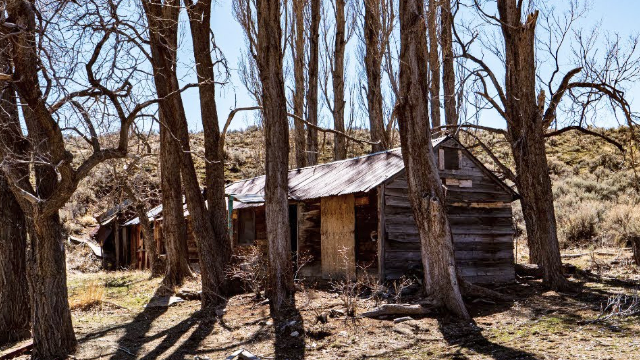
Seeing the Sheldon
Human inhabitants are few up in this corner of northwestern Nevada, while antelope are aplenty. But boy, it wasn’t always that way. Not far from Josie’s isolated creekside cabin is a half a million acres of land that looks the same now as when Nell visited her in 1954 as it did in the late 1800s: the Sheldon National Wildlife Refuge.
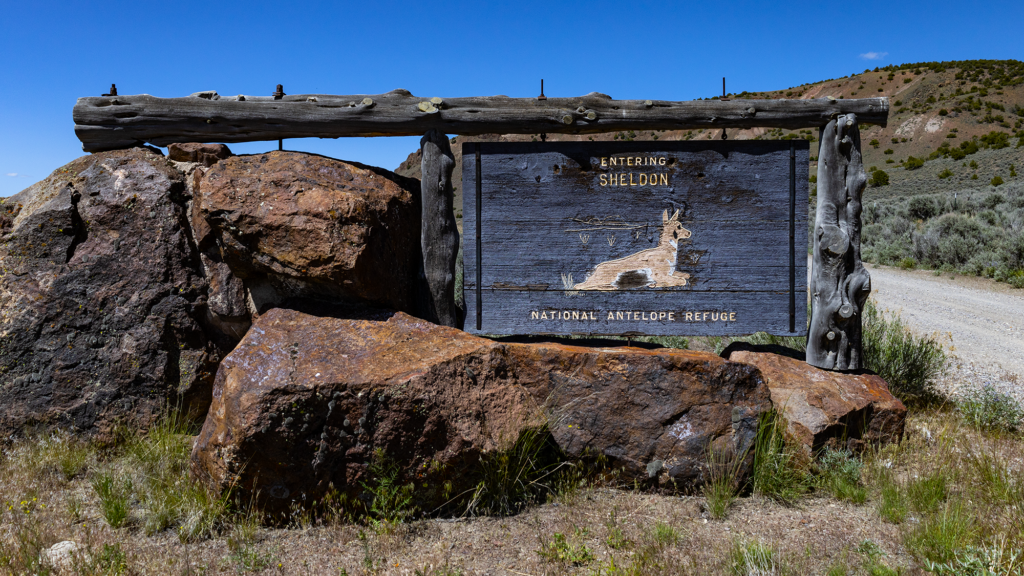

Even with federal land managers preserving and protecting huge swaths of Nevada terrain, most of them employ modern improvements. So that would include stuff like fences, cell phone towers, paved roads, or even LEED-certified visitors centers spelling out why it’s important and worth preserving. But in the Sheldon, no such infrastructure exists except for an obsidian lined backcountry highway forged by the Civilian Conservation Corps back in the 1930s. That, and the Last Chance Ranch. And while the idea of establishing National Wildlife Refuges began on a pelican-inhabited island in Florida back in 1903, Nevada’s first national wildlife conservation area was dreamt up on the grounds of another pelican island.
Basically what happened is T. Gilbert Pearson, the man who started the National Audubon Society, got a hold of E.R. Sans, who was the Reno contact of Nevada’s U.S. Biological Survey office, and asked him to accompany him on a trip to survey Pyramid Lake’s American White Pelican-inhabited island, now known as Anaho Island. They toured the island and ended up being stranded out there for the night, but while they were there, dreamt up a refuge in the name of the pronghorn antelope, who at the time were on the verge of extinction.
After their night envisioning this antelope refuge among the pelicans, Pearson was able to rally the National Audubon Society and the Boone and Crockett Club (the oldest wildlife conservation system in North America) to purchase the Last Chance Ranch, an original homestead in northwestern Nevada, which would serve as the headquarters of Nevada’s first national wildlife refuge: The Charles Sheldon National Wildlife Refuge.
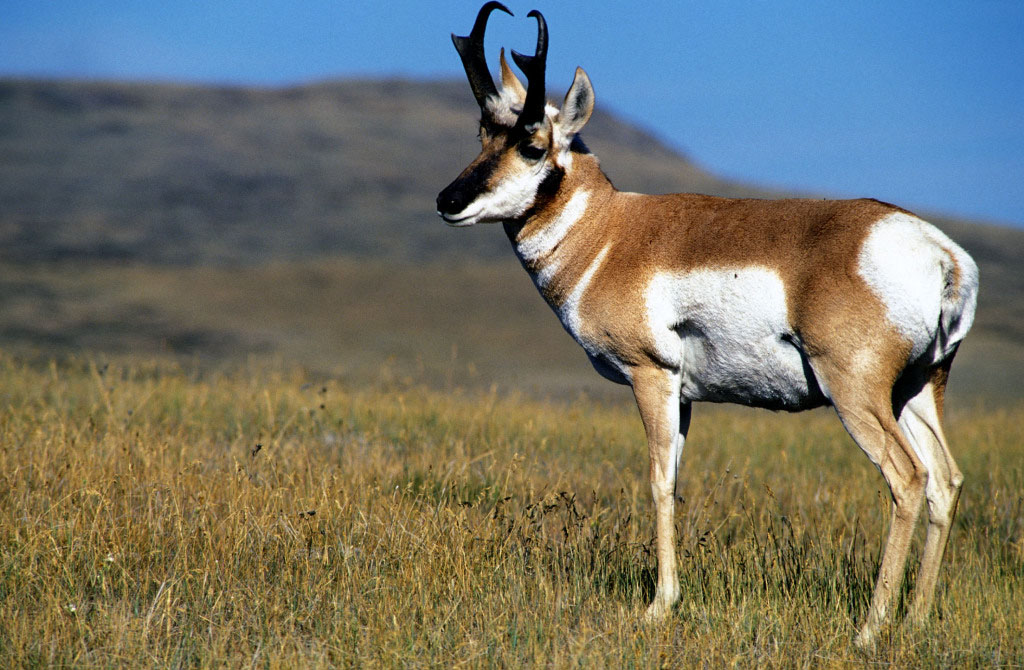
George Hapgood originally built his ranch, The Last Chance Ranch, as his last chance to become a real stockman. Once it was acquired by the National Audubon Society and the Boone and Crockett Club to become the HQ of the first National Wildlife Refuge in Nevada, it would also become the pronghorn antelope’s last chance at surviving, preserving the gushing natural cold springs that flow through hundreds of thousands of uninhabited acreage as the ideal habitat for conservation.
Amazingly enough, The Last Chance Ranch, and the 574,000 acres that surrounds looks the exact same today as it would’ve in the late 1800s and during Josie Pearl’s time in this part of the West. My husband and I were up in this part of the state in the spring of 2024 and it really is like stepping back in time. Traveling down those sparkling, obsidian covered, CCC-built roads with nothing but classic sagebrush steppe nestled beneath some of Nevada’s most dramatic high desert plateaus (the same ones that inspired Maynard Dixon for so long, by the way) is the closest thing to interacting with another time I think we’ve ever experienced.

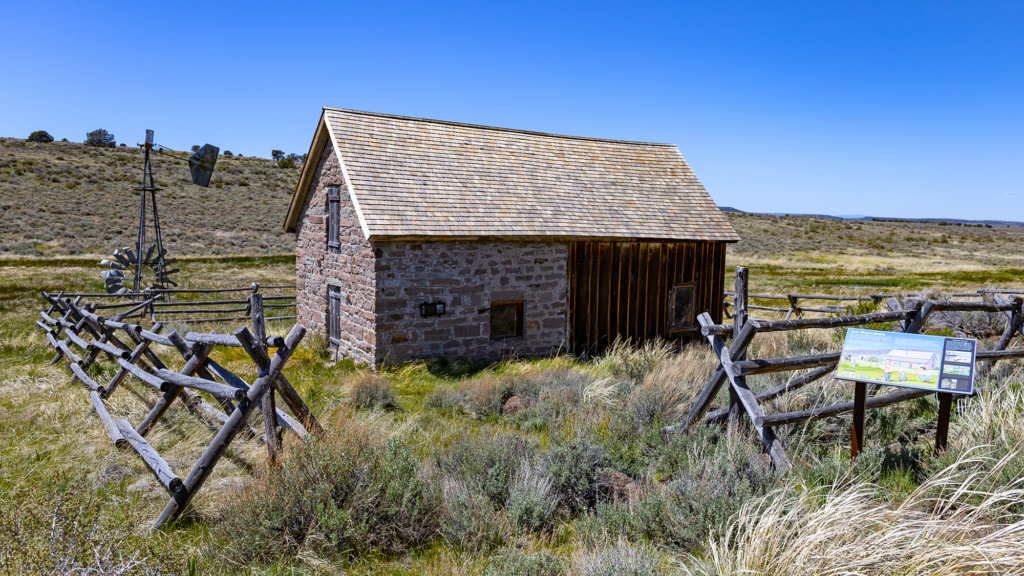
We’d crossed into the Sheldon National Wildlife Refuge borders a couple of different times before—first while visiting the Denio region, and also from another southern approach near Massacre Rim—but had never driven through the original headquarters of the Last Chance Ranch until late spring of 2024. There, with careful preservation measures made by US Fish and Wildlife, the Last Chance Ranch remains, with a few antelope bounding in the distance now, and just the same as it’s always been.
The pronghorn antelope would not only go on to survive but thrive. And while the Hapgood family and any other wildlife personnel managing the pronghorn antelope refuge would’ve been in Josie’s proximity, a little over 120 miles down the road, I like to imagine just her and the antelope out there, and as Nell described, some of the last free beings of their kind, together. Maybe she would’ve even had a black fire opal or two in her pocket, too.
Virgin Valley, and the Nevada Black Fire Opal
Josie of course invested in mineral claims that kept her bank account fluctuating between six figures and two. But knowing a world class occurrence of precious opals were up there with her and just as mysterious as the life she led, well, that will always keep me smiling, wondering what part in this bonanza Josie played.
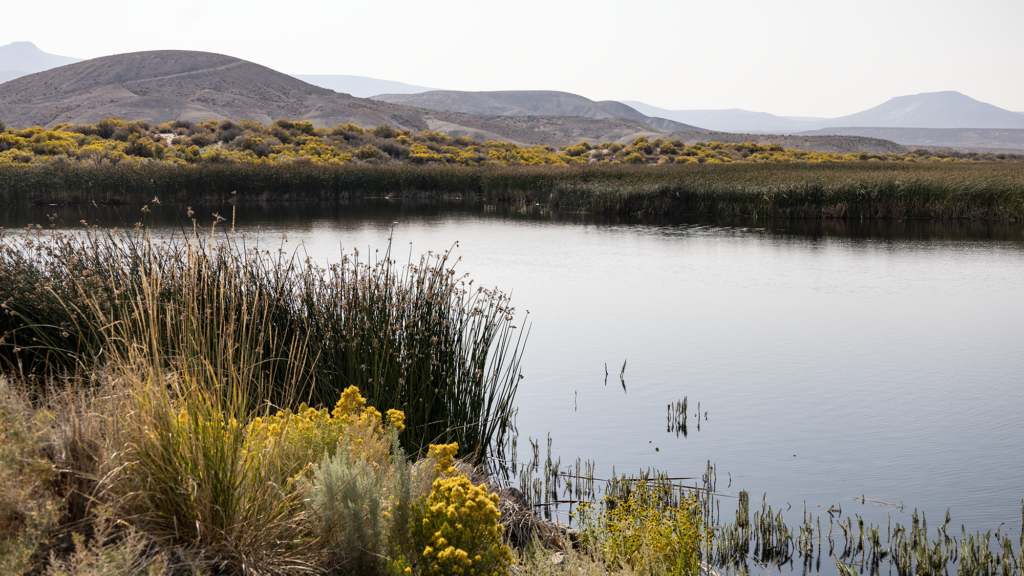
This region of northwestern Nevada and southeastern Oregon behold some of the oldest indigenous sites in North America and was home to many people thousands of years before Josie, and any other signs of what would become an unending stream of pioneers following the Applegate-Lassen cutoff of the California Trail. But these naturally occurring precious black opals weren’t ever really realized until the turn of the 20th century, at least not in modern history. The way I understand it, Basque sheepherders and other buckaroos cowboying the region knew of these Nevada opals and would rockhound for fun while out on the range, but it wasn’t until 1905 when a local rancher realized the actual possibility sparkling before him.
But there, among the antelope, cattlemen, and dark skies was one of the world’s two deposits of black fire opals, only naturally occurring here in Nevada’s Virgin Valley, and Australia. After rancher Ed McGhee made this revelation with a discovery of opal chips at ground surface, he and a few others staked their claim beneath what would become a world-famous high plateau ridgeline in Nevada’s far-flung northwestern corner. From there, the rush was on. McGhee originally owned the claim that would become the Rainbow Ridge Opal Mine, but with many other opal hunters in the region, all three of these modern, pay-to-dig opal mines would form right around the same time: the Rainbow Ridge, Royal Peacock, and Bonanza black fire opal mines.
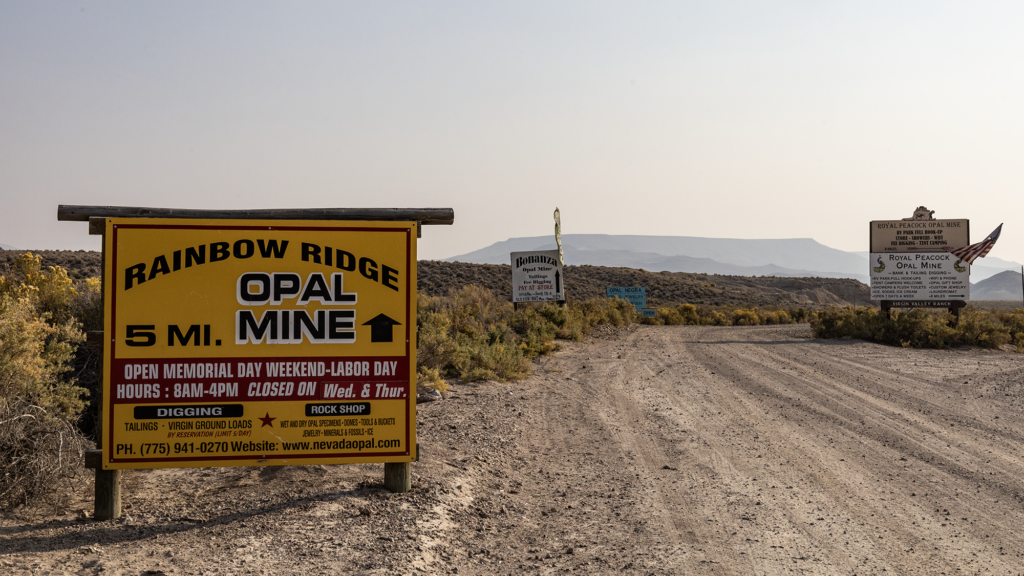
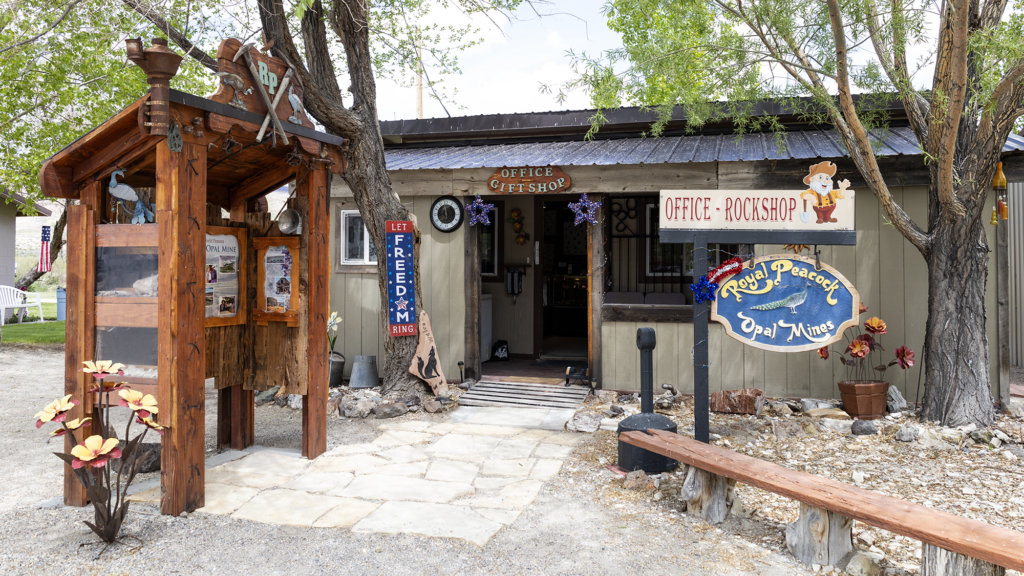
We know that mostly every one of Nevada’s 300+ mountain ranges were bore into then assayed for their mineral purities, but none of those initial prospectors were looking for opal. Home to some of the most famous silver and gold discoveries on earth, Nevada’s geologic makeup is special and rare. A lot of that has to do with prehistoric cataclysmic events, which is the entire narrative when it comes to Virgin Valley black fire opals. Even though Virgin Valley today is a wide-open sagebrush basin, geologists know that millions of years ago this was a dense forest that was then flooded and waterlogged. Then, with the eruption of a lot of volcanic activity, it covered and pressurized this prehistoric ash-filled lake, filling every cavity of those old, dead trees that over time, created fire opals.

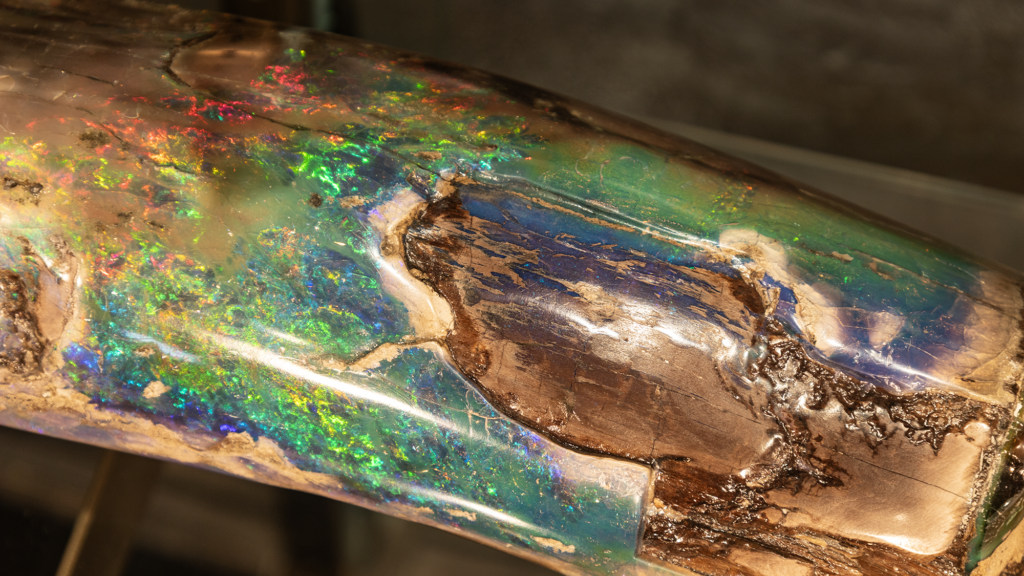
There’s black opal which is already super rare and highly coveted, but what we’re talking about here is black fire opal, whose opalescence is equal to the best in the whole world. Sometimes black fire opals have a colorless background with flashes every hue of the color spectrum, or look like honest-to-god opalized wood with a brown, tree-like webbing, which they actually are. Opalized petrified wood. You can’t imagine it, you just have to see it. Red is usually the most sought after flash of color, and up in the Virgin Valley, is actually in the realm of possibility of rockhounding yourself.
It’s a wild thing, realizing all of the opals recovered here are tangible emblems of a cataclysmic event, and tiny shards of an ancient, opalized forest—so opalized twigs, branches, root systems, or even entire logs from ancient Gingko trees. And every once in a while the most valuable discovery to be made is realized: “fire cones”, or whole opalized pine cones. Ed and these other early claim stakers knew the promise of the region from what they could see on the surface level, and even as they drove deeper and ultimately dug a thousand-foot-deep underground tunnel, I don’t think their wildest dreams would include a 2,500-carat opal—the largest, and most precious in the world.
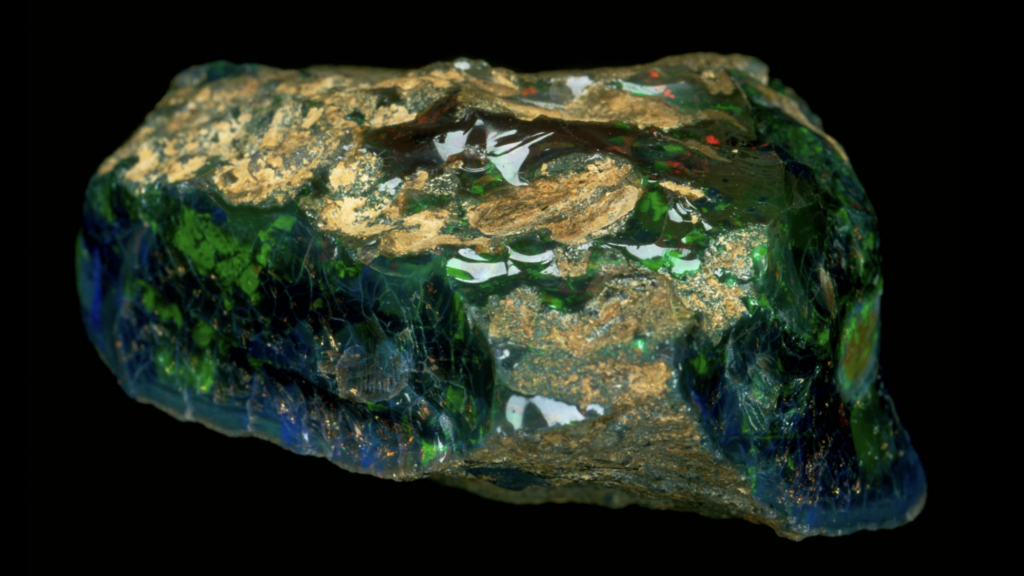
Finding the Roebling: The World’s Largest Precious Black Fire Opal
By the time the late nineteen-teens came around and opal mining in these parts was more renowned than gold and silver put together, many huge, important opals were pulled from Virgin Valley, and mostly from that 1,000 foot underground tunnel Ed and his partners forged. But then in 1920, opal miner Lew Thompson discovered something truly astonishing: a 2,585 carat black fire opal that, at the time, was estimated to be worth $250,000 dollars and revered as the most expensive opal ever found. It still is, though I’m positive its price point errs more on the side of priceless.

It became known as the Roebling once mineral collector Colonel Washington Augustus Roebling acquired it, who was not only a wealthy fine gem collector, but also the brilliant chief engineer of the Brooklyn Bridge. The enormous black fire opal remained in his private collection up until his passing, and in 1926 his son John A. Roebling donated the Roebling Opal along with $150,000 dollars to ensure its maintenance in the Smithsonian.
It’s still the largest, most magnificent black fire opal ever discovered, prized for its size but also its rare origin story, and remains in the Smithsonian’s care. Even with this event recorded in our national history books, the black fire opal wouldn’t become Nevada’s official state precious gemstone until 1987.
The Hodson family took over Ed’s claim and named it the Rainbow Ridge Opal Mine in 1949, and in the decades since, several other significant opals have been discovered near that enigmatic underground trench, including the “Father’s Day Opal”, which is said to be the world’s largest precious opal. You can see it on display at the Rainbow Ridge Opal Mine today which is still under Hodson family control, where visitors can pay-to-dig for their own lively specimens or even purchase one from their gift shop and showroom for about the same price.
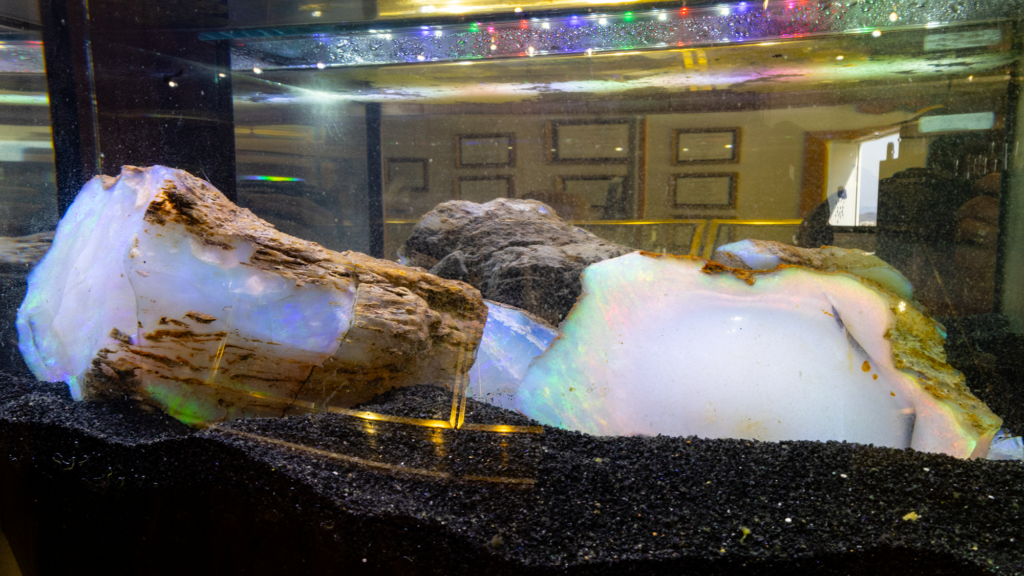
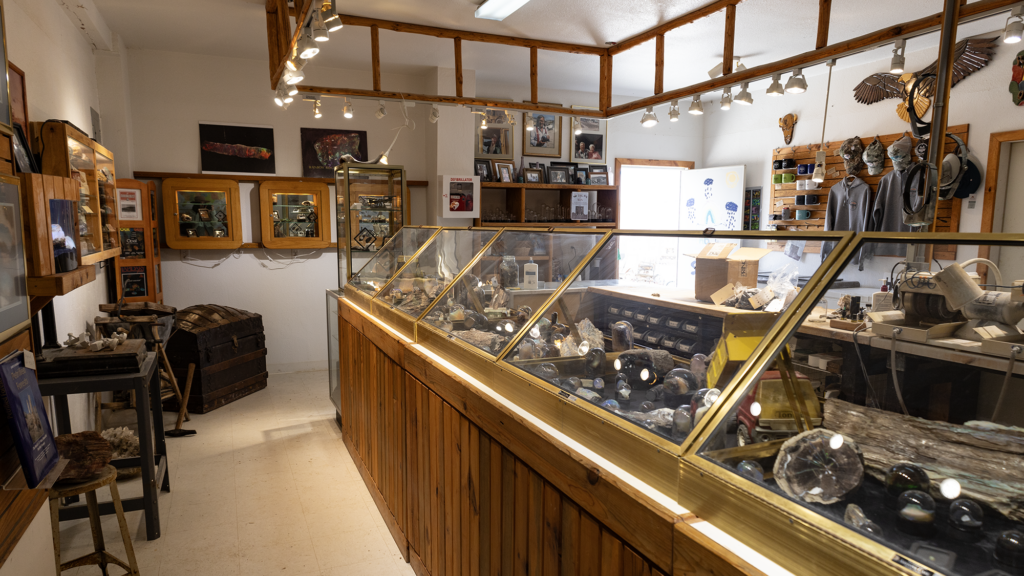
NEVADA WILD: FOUND
Josie lived out there among the antelope and the opals until she died in 1962. She was 89.
Living in a way most other women (and people) of her time never knew or deliberately avoided, as a fierce independent she could’ve chosen to live anywhere and did participate in some of the most sensational boomtowns in the West, but ultimately landed on Nevada’s dangerously isolated upper lefthand corner with intention. A true Legend of Lost Nevada, she was a person who knew what it meant to be alone, but was never actually lonely.
You could say she was maybe as misunderstood as the terrain she chose as her home, living a lifestyle that, no matter what century you’re in, most people will never understand. They won’t understand what it’s like to lie back and gaze into the Milky Way galaxy shining through the rising steam of a flowing hot creek, or what it’s like to watch the second fastest land animal speed through a fenceless terrain just the same now as its ancestors did 100 years ago. Or what it’s like to stare deep into the cataclysmic mystery of a black fire opal, and all that it represents to a person like Josie, and every other desert explorer who takes the time to stop and see.
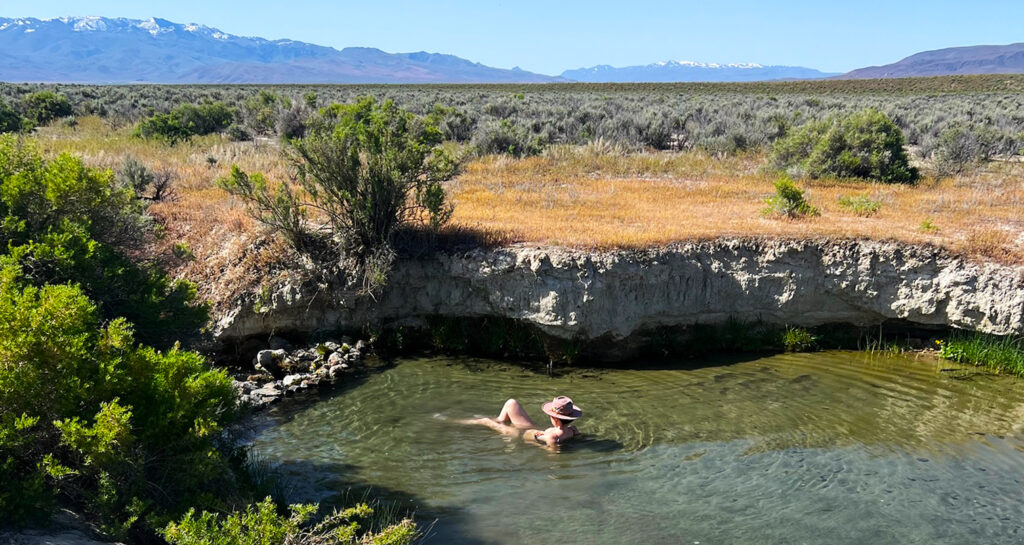
Sources
- “Australian Black Opal”, Australian Black Opal, June 2024, https://australianblackopal.blogspot.com/2011/10/roebling-black-opal.html
- Castor, Stephen B. and Gregory C. Ferdock. 2004. Minerals of Nevada. Reno, Nevada. Nevada Bureau of Mines and Geology Special Publication, University of Nevada Press.
- “Josie Pearl”, Wikipedia, December 2021, https://wiki.blackrockdesert.org/wiki/index.php/Josie_Pearl
- Laxalt, Robert, “The Other Nevada”, National Geographic, June 1974, 33.
- Murbarger, Nell. 1958. Sovereigns of the Sage. Palm Desert, CA. Desert Magazine Press.
- “Nevada’s State Symbols”, Nevada State Assembly, June 2024, https://asm.leg.state.nv.us/visit/education/primary/nevadas-state-symbols/
- Pyle, Ernie.1947. Home Country. New York, NY. William Sloane Associates, Inc.
- “Rainbow Ridge Mine (Monarch Opal Mine; Roop Mine), Virgin Valley, Humboldt County, Nevada, USA”, Hudson Institute of Mineralogy, June 2024, https://www.mindat.org/loc-19286.html
- “Roebling Opal: Amazing Rare blue and green Opal Found in Nevada”, Geology Page, June 17, 2020, https://www.geologypage.com/2020/06/roebling-opal-amazing-rare-blue-and-green-opal-found-in-nevada.html
- “Sheldon National Wildlife Refuge”, U.S. Fish and Wildlife Service, June 2024, https://www.fws.gov/refuge/sheldon
- “Virgin Valley Opals”, Rainbow Ridge Opal Mine, June 2024, https://www.nevadaopal.com/history

